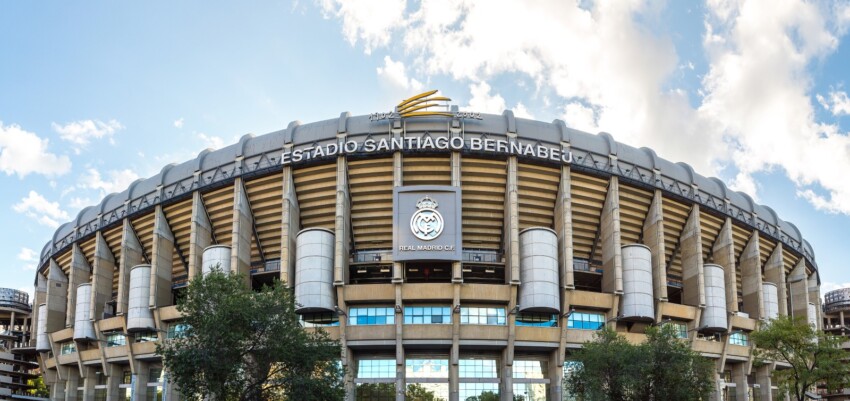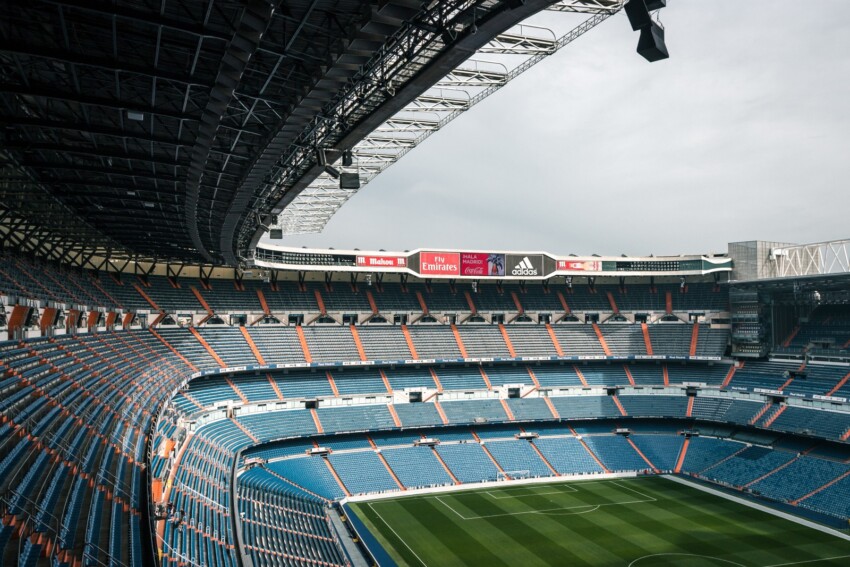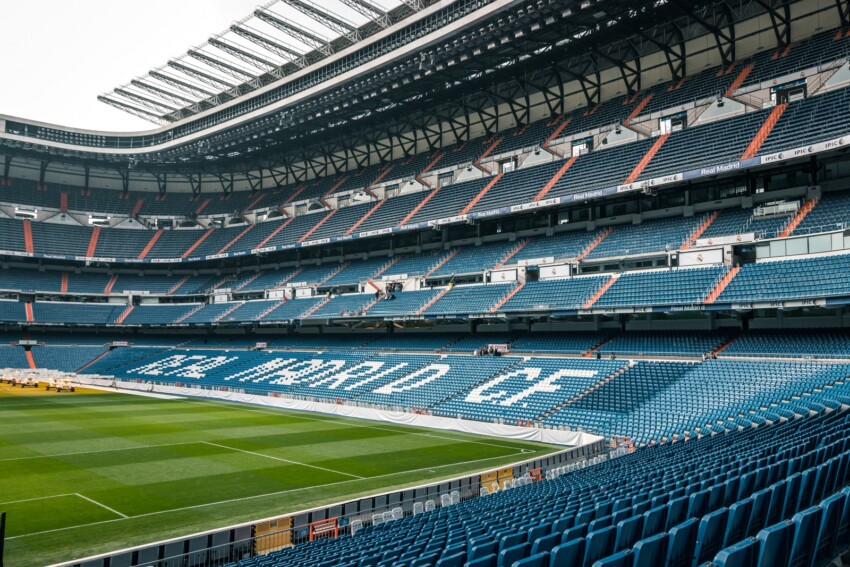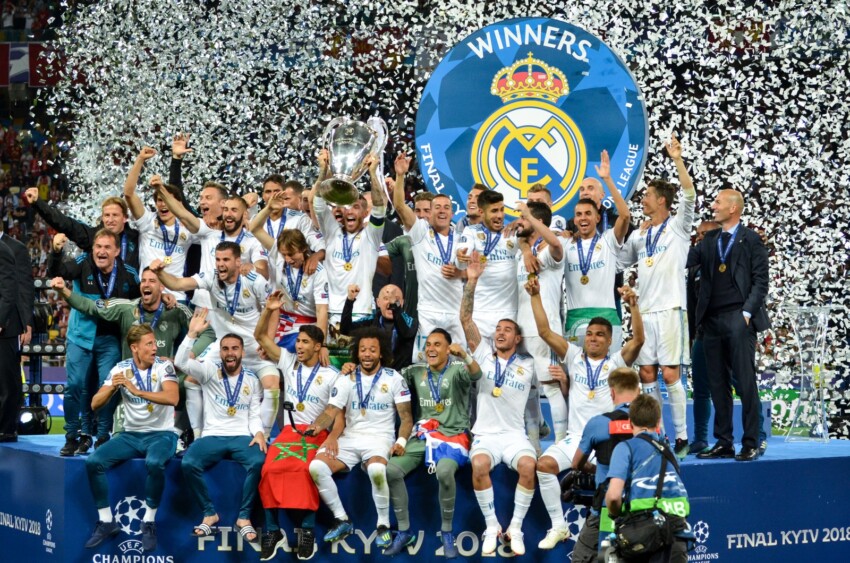
The Santiago Bernabeu stadium in Madrid is so famous that even the most football-averse person has certainly heard of it, while for fans calling it an icon is no exaggeration.
This temple of European football is the home of Real Madrid, the historic team in the hearts of many Spanish and other football fans, and has been the scene of legendary matches such as the 82 World Cup final between Italy and West Germany, won by our compatriots with a memorable 3 to 1.
You too can experience the emotions of the great champions by taking part in a Bernabéu Tour, an itinerary inside the stadium that will let you see it from the perspective of the protagonists.
You will also learn about the history and curiosities of the legendary Real Madrid, the team of the ‘galactics’ Zinedine Zidane and Cristiano Ronaldo (so called because of their staggering salaries), as well as many other football legends.
During the tour, close your eyes for a moment: can’t you hear the whistle blow? A roar rising from the stands? A goal scorer cheering as he raises the cup that crowns him champion? You are not rambling, it is the magic of great football.
We recommend a visit to the Santiago Bernabeu stadium even for those who are not super-football fans but simply curious.

Great emotions await the participants of the Bernabéu Tour, a visit to the mythical Madrid stadium that allows you to see the rooms where the protagonists of the matches move, such as the dressing rooms, the press room, the presidential box and the tunnel from which the players come out onto the pitch.
The itinerary couldn’t start in a better way: it begins with a panoramic view of the stadium from one of the four towers. At a glance, the gigantic size of the stadium is truly a breathtaking sight.
Then we move on to the Best Club in History room, dedicated to the history and triumphs of Real Madrid, with an audiovisual gallery, interactive installations that allow you to consult historical and unpublished documents and videos, and a collection of more than 200 objects including cups, trophies, shirts, balls, photos and memorabilia. The highlight of the collection is the Best Club of the 20th Century trophy.
This then leads to the Sensations room and a photo gallery.
Perhaps one of the most exciting moments of the tour is when you go down to the playing field and can walk around freely, enjoying for the first time the same view that a professional footballer enjoys. Of course, the ball and the opponents to beat are missing…
After you have identified yourself as a footballer, give yourself a touch of importance by visiting the presidential balcony, imagining that you are an executive or politician in an official capacity.
From here you have the best view of the pitch and it was from here that Bearzot admired the victorious match in which Italy won the 1982 World Cup.
Go back to being a footballer by visiting the dressing rooms of Real Madrid and the visiting team, the humblest and at the same time most meaningful behind-the-scenes area of a stadium.
It is here that football legends spend the electrifying moments before the start of a match and it is here that they can give vent to their emotions, away from the prying eyes of the cameras.
Listen to the sound of your own footsteps as you, like the stars of international football, walk through the tunnel leading from the changing rooms to the pitch: as you do so, try to imagine what it feels like moments before the start of a match that could decide your fate.
Then take a look at two other key elements of a stadium where the protagonists sit: the benches and the technical area.
Conclude your visit to the Madrid stadium with another viewpoint: that of the journalists sitting in the press box. Although not involved in the game, they are also unfailing characters in the history of football. Their narrative power has undoubtedly contributed to the spectators’ emotions during the most exciting matches.

The ultra-modern stadium is one of the most visited tourist attractions in Madrid. It is an impressive architectural construction that does not fail to impress its visitors; moreover, football is an important element in Spanish culture and this is the best place to understand its importance.
The Bernabeu stadium museum can be visited independently, without a tour guide. You can request an audio guide.
The duration of the tour is approximately one and a half hours. At the end of the tour you can buy your souvenirs in the official store.
Due to the large number of tourists and fans at the Bernabeu, we recommend that you buy a ticket with priority entry. This will save you time in the queue at the entrance and will ensure that you visit on the day of your choice.
Alternatively, you can visit the Bernabeu with a local guide who will make your visit more complete.
If you want to see a Real Madrid match, find out about all the football matches, national and continental competitions, concerts and all the other events that take place at the Real Madrid Stadium, as well as buy tickets, visit this link.
It is possible to take part in the Bernabeu tour every day, with the exception of 25 December and 1 January. It is open Monday to Saturday from 9.30 a.m. to 7 p.m. and on Sundays and holidays from 10 a.m. to 6.30 p.m.
Unless there are special organisational requirements, visits to the Bernabeu Stadium are also offered at reduced hours on match days.
A full tour can be taken up to five hours before kick-off, while in the three and a half hours before the match the tour is limited to the ‘Best Club in History’ room, the trophy exhibition and a panoramic view of the stadium.
The Santiago Bernabeu stadium is located in the Castellana area and can be reached by metro line L10, by train getting off at Madrid-Nuevos Ministerios station and by numerous bus lines.
Entrance to the stadium for tours is from the ticket office in Paseo de la Castellana.

The Bernabeu stadium is owned by Real Madrid, one of the three professional football clubs in the Spanish capital, along with Atlético de Madrid and Rayo Vallecano. Of the three, it is the one with the most records and the largest number of fans.
Founded in 1902, it is now the Spanish team that has won the most awards as well as the club that has won the most international awards; it is also one of the richest sports clubs in the world. More than 80 trophies are to its credit, including 33 Spanish championships (a national record), 12 Champions Cups/Champions Leagues and two UEFA Cups.
A historic date for Real Madrid is 1945, the year in which former footballer Santiago Bernabeu took over the management of the team: he kept it until 1978.
The Santiago Bernabeu stadium in Madrid was built between 1944 and 1947 and inaugurated under the name of Nuevo Estadio Chamartín in December of that year; the inaugural match was played by Real Madrid against the Portuguese team Os Benenenses.
In 1955, the name of the stadium was changed to Santiago Bernabeu, to pay homage to the team manager who had been one of the main architects of its construction.
Less than ten years after its inauguration, work began on the expansion of the stadium that increased its capacity to over 100,000 spectators, making the Bernabeu the second largest stadium in Europe at the time.
Other major renovations were carried out in the 1980s in order to host World Cup matches and later in the 1990s to comply with new regulations against violence in stadiums.
It was at the end of the 1990s that the stadium’s capacity was considerably reduced, but its visibility was increased, while other interventions during the 2000s made it one of the most modern stadiums in the world.
There are many hotels, flats and bed and breakfasts around the Santiago Bernabeu stadium. There are some 4-star hotels that are also suitable for a business clientele of large international chains, and numerous smaller accommodations. After all, the Bernabeu is located in a very populous area of Madrid, between the stations of Nuevos Ministerios, Cuatro Caminos and Tetuan.
The Santiago Bernabeu stadium is located along Paseo de la Castellana in the northern part of Madrid in the district of Chamartin. It is well served by the metro, stop Santiago Bernabeu.
City Card allow you to save on public transport and / or on the entrances to the main tourist attractions.
